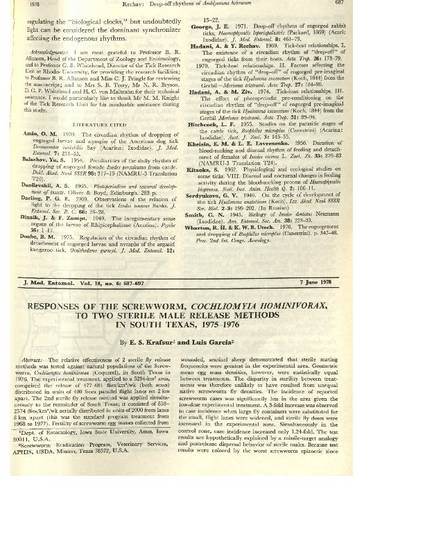
The relative effectiveness of 2 sterile fly release methods was tested against natural populations of the Screwworm, Cochliomyia hominivorax (Coquerel), in South Texas in 1976. The experimental treatment, applied to a 5284-km2 area, comprised the release of 477–681 flies/km2/wk (both sexes) distributed in units of 400 from parallel flight lanes set 2 km apart. The 2nd sterile fly release method was applied simultaneously to the remainder of South Texas; it consisted of 858–2574 flies/km2/wk aerially distributed in units of 2000 from lanes 8 km apart (this was the standard program treatment from 1968 to 1977). Fertility of screwworm egg masses collected from wounded, sentinel sheep demonstrated that sterile mating frequencies were greatest in the experimental area. Geometric mean egg mass densities, however, were statistically equal between treatments. The disparity in sterility between treatments was therefore unlikely to have resulted from unequal native screwworm fly densities. The incidence of reported screwworm cases was significantly less in the area given the low-dose experimental treatment. A 3-fold increase was observed in case incidence when large fly containers were substituted for the small, flight lanes were widened, and sterile fly doses were increased in the experimental zone. Simultaneously in the control zone, case incidence increased only 1.24-fold. The test results are hypothetically explained by a missile-target analogy and postrelease dispersal behavior of sterile males. Because test results were colored by the worst screwworm epizootic since 1972, some phenomena underlying the outbreak are described. Highly fertile overwintering screwworm populations are suggested to have been the primary factor in generating the 1976 epizootic.
Available at: http://works.bepress.com/elliot-krafsur/13/

This article is from Journal of Medical Entomology 14 (1978): 687, doi: 10.1093/jmedent/14.6.687.